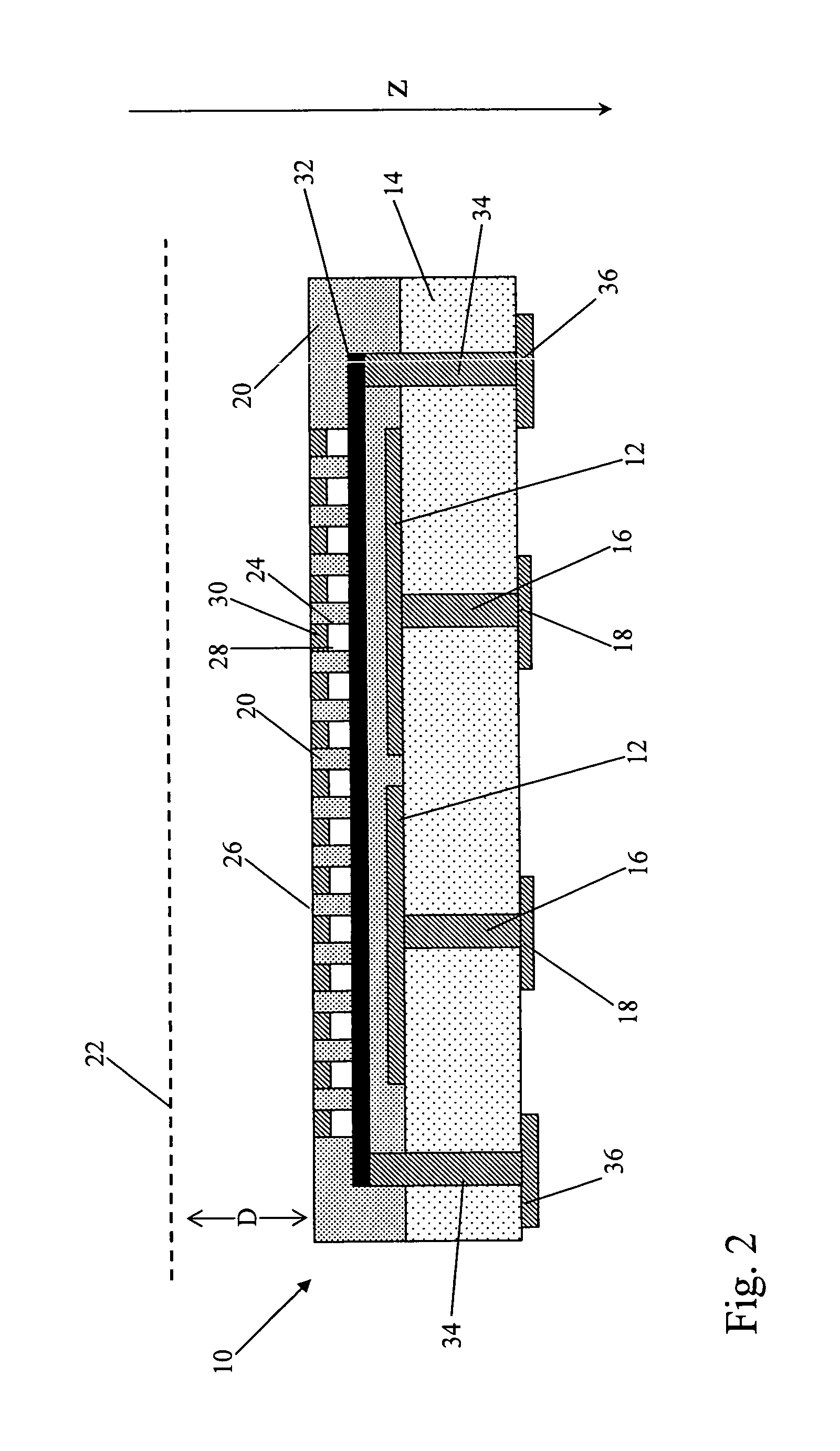Protected readout electrode assembly
a readout electrode and protection technology, applied in the direction of instruments, electrical devices, radiation measurement, etc., can solve the problems of easy early aging, material with the right resistivity properties, and difficult manufacturing,
- Summary
- Abstract
- Description
- Claims
- Application Information
AI Technical Summary
Benefits of technology
Problems solved by technology
Method used
Image
Examples
first embodiment
[0040]FIG. 1 is a schematic side view of a readout electrode assembly according to the present invention;
second embodiment
[0041]FIG. 2 is a schematic side view of a readout electrode assembly according to the present invention; and
[0042]FIG. 3 is a schematic side view showing the operation of a readout electrode assembly according to the present invention in a Micromegas detector.
[0043]FIG. 4 is a schematic side view showing an avalanche particle detector with a readout electrode assembly in accordance with an embodiment of the present invention.
[0044]FIG. 1 illustrates a side view of a part of a readout electrode assembly 10 according to the present invention. Readout pads 12 are formed on the surface of a dielectric bulk substrate 14. In the embodiment shown in FIG. 1, the bulk substrate 14 is formed from flame retardant 4 (FR4), an epoxy resin bonded glass fabric, while the readout pads 12 are formed from copper. However, other materials may also be used for the readout pads 12 and for the bulk substrate 14. Metallic interconnectors 16 are embedded in the bulk substrate 14 and connect the readout pa...
PUM
 Login to View More
Login to View More Abstract
Description
Claims
Application Information
 Login to View More
Login to View More - R&D
- Intellectual Property
- Life Sciences
- Materials
- Tech Scout
- Unparalleled Data Quality
- Higher Quality Content
- 60% Fewer Hallucinations
Browse by: Latest US Patents, China's latest patents, Technical Efficacy Thesaurus, Application Domain, Technology Topic, Popular Technical Reports.
© 2025 PatSnap. All rights reserved.Legal|Privacy policy|Modern Slavery Act Transparency Statement|Sitemap|About US| Contact US: help@patsnap.com



